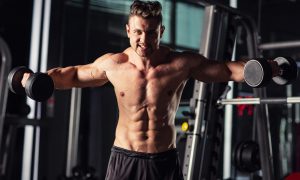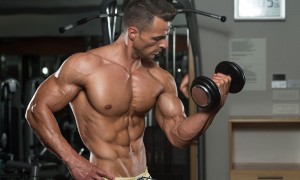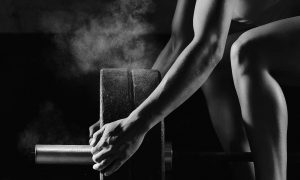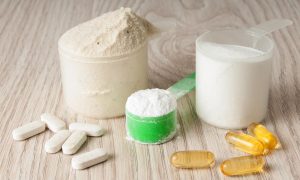Four programs designed to pack on serious mass

|
|
Are you finding yourself stuck in a rut when it comes to your training, as no matter how hard you seem to push yourself in the gym, and no matter how disciplined you are with your diet, you simply cannot seem to gain any decent weight at all? If so, it sounds as if it may not be a lack of training frequency letting you down, or a lack of intensity in the gym, but rather, a lack of a decent training program. Even if your training program has been tried and tested by the best IFBB pro bodybuilders in the world, if you’ve been following it for too long, of course you are going to struggle to build muscle. The problem that many people tend to have when trying to pack on muscle mass, is, that they stick with the same training program for the entirety of their off-season, which for most, is during the winter. This means that from the early Fall through to Spring, they will perform the same exercises, utilizing the same weights, for the same number of sets and reps. For a while, this is fine, but to shock the muscles into new growth, you need to keep the body guessing. If your training program is letting you down, here’s a look at four programs that are designed to pack on serious muscle mass.
GVT

GVT, or German Volume Training, is, as you might expect, a program which places an emphasis on high volume training. The basic principle behind GVT is that you select just two exercises, and you then perform 10 sets of 10 reps per exercise. Now, to some of you that may sound easy, as you are basically only performing two exercises for an entire workout, but once you try it for yourself, you realize just how tough it is. With GVT, you should choose a weight that allows you to perform 10 sets of 10 reps each time. To begin with, the weight may feel light and the exercise may feel easy, but once you reach your sixth set, you suddenly hit the wall, feel the burn, and begin to find out why GVT is so popular. Between working sets, you should also have no longer than 60 seconds to rest. Per day you will work two primarily muscle groups, and will then alternate them over the course of 3 days per week. As with any high volume training protocol, in order to grow, you will need to ensure that you remain in a caloric surplus. For your two exercises, you should choose compound lifts as they will yield the most growth. You may also wish to do another exercise or two at the end, if you have anything left in the tank.
Sample workout:
Incline barbell bench press – 10 sets of 10 reps
T-bar rows – 10 sets of 10 reps
*Optional:
Dumbbell flyes – 3 sets of 10 – 15 reps
Wide grip lat pull down – 3 sets of 10 – 15 reps
FST – 7
Made famous by the ‘Pro creator’ Hany Rambod, FST-7 stands for fascia stretch training 7, and it is widely believed to be the reason why Jay Cutler and Phil Heath have collectively earned more than 9 Mr Olympia titles to date. The basic idea here is that, surrounding each of our muscles, we have fascia tissue. People with thicker tissue will find it tougher to target the muscle, because of the tissue that needs breaking through. Hany believes that by performing high volume training exercises at the end of a workout, you can stretch the fascia, cause it to become thinner, and target the muscles and make them much more visible. You basically train as usual, but finish off to train for the ultimate muscle pump, by performing 7 sets of what is typically an isolation exercise. So, if you wish to grow your shoulders, you will finish up your shoulder workout by performing, say, 7 sets of lateral raises, aiming for around 15 reps. You should only target one major muscle group per week in this way. Basically, you perform your workout as usual, but on the very last set, you choose an isolation exercise for the muscle you are looking to bring up, and you perform 7 sets of 15 reps.
5 x 5 training

With 5 x 5 training, this is perfect for people looking to add size and strength to their arsenals. You basically perform three separate exercises which target your primary muscle groups in your upper and lower bodies, all in the same workout. You should however, perform 5 sets of 5 reps, and if you would like, you can finish off with some isolation work, though you don’t have to.
Sample workout:
Barbell squats – 5 sets of 5 reps
Flat bench barbell press – 5 sets of 5 reps
Bent over barbell rows – 5 sets of 5 reps
*Optional:
Dumbbell curls – 3 sets of 12 reps
Triceps rope pushdowns – 3 sets of 15 reps
Full body workouts
If you’re sick and tired of 5 day split programs, a full body program is exactly what you need. The basic premise here is that you work every single major muscle group every time you workout with a full body program. Ideally you perform a full body workout three times per week, making sure to really push yourself when you train. You should choose heavy compounds for most of your exercises, as they are what yield the most impressive growth results. Ideally each workout you should perform at least one exercise that works: chest, back, shoulders, legs, biceps, and triceps.
Sample workout:
Incline barbell bench press – 4 sets of 12 reps
Barbell bent over rows – 4 sets of 12 reps
Barbell squats – 4 sets of 10 reps
Standing military press – 4 sets of 12 reps
EZ bar curls – 4 sets of 12 reps
Triceps rope pushdowns – 4 sets of 15 reps














